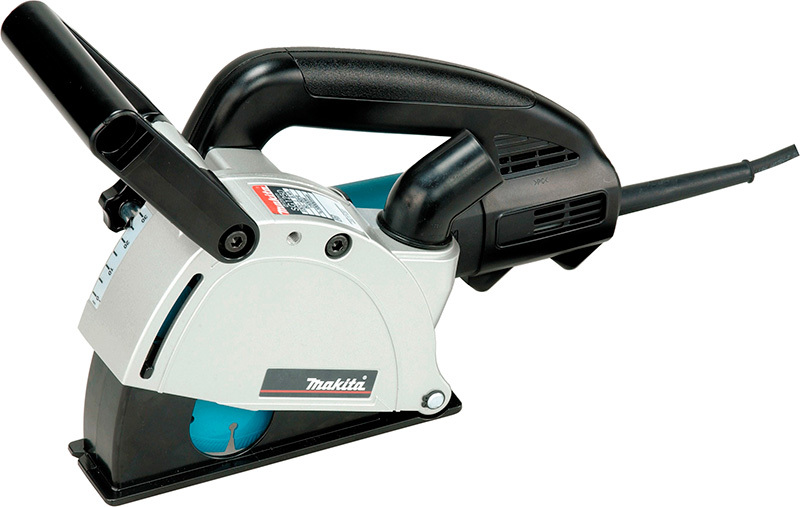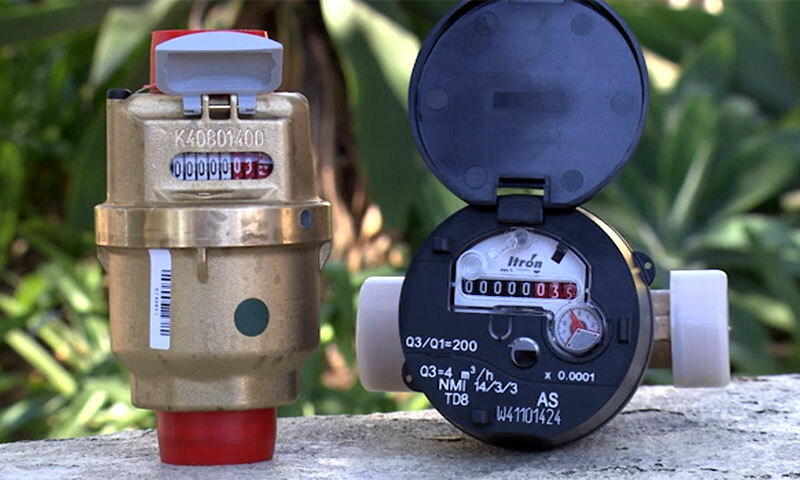Interiors with inclusions of natural stone, metal or brick are quite rare today. And does it make sense to use these materials if the sale is full of inexpensive, effective and easy to install simulations. One of the members of this family - gypsum tile. The variety of design variations of this material allows very well to incorporate it into a very different environment.
Content
- Advantages and disadvantages
-
Features and properties of plaster tiles
- Structure
- The size
- Design, color and texture
- Kinds
- Where applicable - especially design
- masonry ways
-
Self-production of gypsum tiles
- Tools and materials required for the production of
- Molds production
- Tips for taking care of tile
- conclusion
Advantages and disadvantages
Gypsum tile has its own characteristics, which provide her a well-deserved popularity.
Pluses material consist in:
- low weight - because of this it is perfectly suitable for decoration of thin walls and drywall partitions;
- possible to coat any base;
- frost - honorably withstand at least 50 cycles;
- heat resistance - is not afraid of being heated to 70 ° C;
- environmental friendliness and absence of toxins in the composition;
- ease of cutting and assembly;
- accessible to every budget;
- opportunity to make their own tile.
By cons include:
- the relative fragility;
- lack of moisture.






Features and properties of plaster tiles
Gypsum tiles are widely used in the decoration of walls and ceilings in private apartments and houses, as well as in public areas. In its original form it is only suitable for interior use. Such coatings can not be used for the exterior facade. On sale rectangular and square products that mimic stone, bricks, cloth, leather, metal.
The basis of the material - the usual plaster, it is absolutely harmless to human health. If desired, you can make a tile with their hands. This saves a lot of money and will provide a unique material, which perfectly fit into the interior of the future.

Structure
The composition for preparing a mixture of tile along with gypsum include sand, water, surface-active elements and modifiers. Due to the cellular structure material with similar gas concretes. It may be present cement, lime, aluminum powder, quartz sand. Modifiers gives gypsum facing additional hardness and resistance to mechanical damage. Particular strength acquires tile adhesive after drying.

The size
Dimensions of plaster fragments differ depending on the version and material features of its design. Basically it is a small rectangular blocks or individual blocks, with a composition of several decorative elements. Bricks may be narrow or broad. Tiles manufactured in the following sizes - 28 x 6, 29 x 6.5, 9.5 x 38, 5 x 19, 19 x 9.5 cm. Fragments imitating natural stone are parameters - 21 x 10, 27 x 10 cm. Blanks for angles have lateral faces 7 and 12.5 cm.

Design, color and texture
Gypsum tile is presented in a variety of colors. Due to this fact the possibility of including such a lining for the home environment is greatly enhanced. Accent trim in great demand when you make a variety of facilities. Well-chosen texture, hue and accounting features and destination space will provide a stylish interior. The most common tiles isolated area in the hallway and living room, but it is just as often found in the design of children's rooms, bedrooms, bathroom and balcony area.
See also:Finishing arches with decorative stone 50 photos

If the room can not boast of impressive size, white brickwork on one of the walls will be the ideal solution. It is visually expand the space, which is very important for the kitchen, bedroom or nursery.
The area dedicated imitation of natural stone, give the space dynamics. It can act as an independent element, but in the background will also look very dignified. In the background monochrome furniture, picture frames, picture will look impressive and noble.
The most common are white patterns. But you can easily find in the sale of dairy products, sand, beige, gray shades.






Interestingly look a combination of contrasting trim colors. This is especially true for large spaces. Black tiles will look luxurious against a white or beige walls. Bright accents in these interiors are also very welcome.
Often, manufacturers use multiple colors. They are most often related that helps to create a smooth transition and make the material more realistic. This allows you to achieve the effect of versatility, volume and naturalness. Even up close it is impossible to distinguish between the tiles of natural stone or brick. Shade light shades are called brown, dark gray and even black blotches. Also the plate surface may be smooth, decorated with an ornament. Figure formed depending on the shape. It can be geometric shapes, ornate embroidered Monogram leaves.
Kinds
A variety of gypsum facing due not only to its shape, color and size, but also features the texture.






The following are the most common variations of tiles:
- imitation brick - a small thickness allows a perfect fit it into small spaces, decorate the openings and separate areas of the hall or kitchen - a bar, television. No less impressive it looks like finish and spacious rooms;
- imitation of natural stone - products are available in different colors and are virtually indistinguishable from natural materials. Particularly popular tiles of aerated concrete, which transmits the texture of slate. Get help shine a special staining solutions. Not less demand gypsum cement samples which are used for decorating the arches, fireplaces and niches.
Each of these options has advantages and endowed with unique properties. Opting for a particular type of tile is made depending on the style of the interior, the room size and personal taste of the owner.
Where applicable - especially design
When finishing the walls or ceiling of this material should be moderate. Most texturally will look fragmented finish. It is particularly impressive against the background of a smooth surface. If you seal the entire wall tiles, it loses its expressiveness, it will look too heavy and uninteresting. Therefore it is better to limit one or more of the emphasis that the mood of the interior.
See also:Decoration chairs with their hands - methods and examples






Tile is perfect for creating accent area. She can decorate the wall behind the TV, a dining and sleeping area, emphasize the bulge architectural element - fire, columns, arches.
Do not use the tiles in different rooms or on two or more walls. It will be too much. Finish is very active in itself, so it is limited to one part of the apartment.
The hallway is lined with plaster bricks wall section near the door corners. Material partially applied, simulating the exposed stone. Most often, the fragments spread ladder, or randomly, placing them in a horizontal position. For framing the entrance products are placed perpendicular to the doorway. When decorating the walls of the lower portions of the adjacent masonry operate on the principle of a brick.
masonry ways
Choose how placing plaster decor depends on the ideas of the designer. Two main methods are used most often:
- bricklaying - each subsequent row is shifted by a half track relative to the previous one;
- Classic - tiles placed strictly one under the other and faces form a crosshair.






Giving preference to a particular process should take into account the shape and size of products. If they are in the form of bricks, preferably pasting them with a shift expressed forming joints. When formed stone wall covering, trying to make seams invisible. All slit mask formed using a cement mixture, tinted to match the trim. "Stone" wall should look monolithic and fundamentally.
Compositions of different-sized fragments, which differ from one another surface relief faces and different levels are collected on a wall like a ceramic tile. Before installation, it is advisable to expand the future of "panels" on the floor and only then mount it on the wall. This will help avoid the need for rework, will make it possible to minimize the number of joints, saving time and material. With this method laborious alignment of the lateral boundaries is required.
For trimming projections beyond accent areas using grinders. Most material thickness will not allow to do the job with the help of Tile.
Self-production of gypsum tiles
Grand renovation requires strong investments. Therefore, the opportunity to save on material is always current. The fact is that the tiled lining it is possible to make yourself. And it's not as difficult as it seems. With proper selection of the brand gypsum and compliance ratio constituting the artificial stone mixture will have a sufficient strength. The deviation from the recommended standards inevitably leads to embrittlement of the material, rapid formation of cracks and defects.






Tools and materials required for the production of
First of all, for the manufacture of tiles will need a large space in which to maintain a certain humidity and temperature, as well as:
- ingredients for the manufacture of a plaster solution - gypsum, plasticizers;
- tank mixing;
- form of silicone or polyurethane;
- smooth horizontal base of the via layer;
- Colera;
- matt lacquer based on acrylic;
- brush and spatula.
See also:Garden design with their own hands - and the idea of photo examples

Independent production forms will significantly reduce costs.
Molds production
The work will take a few days. sample tiles required for the formation of future capacity. The finished matrix is filled in a liquid polyurethane with hardener and wait until complete solidification. For brick shape sufficient depth of 0.5-1 cm, and to simulate slate - 1-2.5 cm.
Should be defined in advance with the amount, weight, size and shape of fragments into account the characteristics of the room.
Prepare plaster form for mixing tank solution assembling mixer, slaked lime and desired color hue. If the planned additional coloring surface, it can be performed after the completion of the manufacturing process, which includes:
- preparing a gypsum slurry;
- fill in forms;
- drying.

Step by step instructions for the production of tiles with their hands
- At 6 parts of gypsum powder must take one part of slaked lime and adding 7 parts of water. Preparing a mixture with a mixer until smooth. The final solution should be consistency similar to a thick cream.
- Wets the form of water with dissolved soap. Thanks to this procedure, an artificial stone will be easier to remove from the container.
- We fill weight of the gypsum matrix, shaken several times to remove bubbles from the mixture. For this purpose it is possible to produce a vibrating table. Set on a horizontal form a smooth surface.
- Dry them during the day, and then carefully remove the finished tile from the mold and leave for the final drying, avoiding sunlight. The conditions created in a special oven, can significantly reduce the time and improve the quality of the process.

If desired, the tiles can be colored using water-soluble pigments or pre-lubricate paint form to release the raised elements.
To achieve a uniform pitch by using an atomizer.
Fix the paint can be two layers of acrylic varnish.
Tips for taking care of tile
Care for a plaster coating can be accomplished using both wet and dry cleaning. Allowed to use the vacuum cleaner with a special nozzle, brushes with soft bristles, wet cloths. Abrasives and strong detergents can cause irreparable damage to the surface. Spray coating significantly reduces the risk of damage to the upper layer. To ensure furnish moisture resistance, it is treated with specially impregnated. After application of the tool can be cleaned lining.






conclusion
The emphasis of the plaster interior elements make original and unique, saturate a special space authentic atmosphere, and does not require the same time a serious investment and the use of unsustainable labor.



